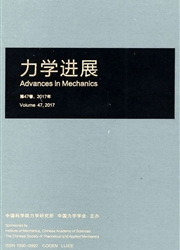

 中文摘要:
中文摘要:
实施月球表面探测时,月表尘埃物质容易在探测设备表面沉积并造成严重不利影响.近年来交变电场除尘方法被认为是在月表进行尘埃防护的有效手段,但要使该方法实用化,仍需要弄清除尘的机理,确定相关影响的因素,以便进行优化设计.本文从实现交变电场的电帘出发,分别介绍电帘表面的交变电场分布、颗粒在电帘表面的受力状态、颗粒群运动过程中的摩擦电荷分布、颗粒运动的模拟方法、颗粒运动过程、除尘效率和能耗的理论和实验研究,并对白清洁太阳能电池板系统的设计与制备进行了总结.对颗粒的起跳过程、静电的生成和除尘效率影响因素等普遍关注的问题进行了细致的讨论和总结,指出了颗粒的带电量对起跳过程的关键作用.最后,对该除尘防尘存在的问题进行了归纳,并展望了该领域的发展趋势.
 英文摘要:
英文摘要:
The adhesive dust particles on lunar surface can easily deposit on surfaces of detecting devices, which poses serious problems for moon surface explorations. Dust removal by electrodynamic field is recently considered as an effective method to mitigate dust pollution for future lunar or Mars surface missions. However, lack of full understanding about the mechanism of dust removal limits practical applications of this technique. In this paper, the realization of electrodynamic field by electric curtain (EC) is firstly introduced, then electric field distribution and forces acting on the particles along the EC surface, tribo-charge distribution during particle flow movement, particle movement simulation methods, dust removal efficiency and energy consumption of EC have been discussed. Particle initial leaping processes, generation of tribo-charge within particle flows and factors influencing the dust removal efficiency have been explained and analyzed in detail. The emphasis is also placed on the contribution of static particle charge to its initial leaping process. At last, the future trend of this technique has also been discussed.
 同期刊论文项目
同期刊论文项目
 同项目期刊论文
同项目期刊论文
 期刊信息
期刊信息
